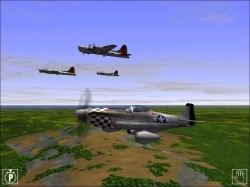| Transformation and Lighting: Sim Survey
by Leonard "Viking1" Hjalmarson |
||||
|
Not long ago VoodooExtreme used a simple question to survey game producers with regard to the divergent directions in 3d hardware. In short, the goal was to discover which element game producers thought more important: fill rate, or hardware transformation and lighting? We used a similar question for simulation developers: "What do you see as being more important in the near future: A card with an extremely high fill rate and full screen anti-aliasing but lacking hardware T&L, or a card with good fill rate (somewhat better than current solutions) WITH hardware T&L? " The question is a bit loose, and obviously developers are generally more focussed on the long term implications. In spite of that, the answers are illuminating. Parsoft All things being equal (but when are they ever?) I'd rather have more processing moved to dedicated silicon rather than tying up the main processor. Anything that frees up a few more cycles on the main processor gives me a chance to add more AI and physics behavior to our games. For now, I'll take T&L. Michael Harrison, Parsoft (Fighter Squadron, Screaming Demons)
 P51 in B17 II. Wayward Design I'm going for the hardware T&L, especially for our type of product. Given that I can run B17-2 at 1600x1200 at reasonable refresh rates, fill rate is definately not the issue it once was. Quake fans would probably do better with the V4 though, in the short term... Andrew Walrond (B17 II: The Mighty Eighth) |
 Team Alligator SIMIS, Kuju Entertainment On a pragmatic level, you have to ask, where are the bottlenecks in current hardware and games? The bottlenecks depend greatly on what you are trying to do. If you are doing many passes per triangle, having very high levels of overdraw, applying multiple filters to the screen using large alpha polygons, or running at very high resolutions then you are probably render bound. If you are doing highly complex static geometry then you could be triangle bound or bus bound, and may often have problems gaining peak rates because you can't deliver your peak rates all through a frame. If you have complex dynamic geometry and dynamic lighting, then you are almost certainly CPU bound, lighting is very expensive. Finally, if you heavily overcommit on texture, then you are probably bus bound. So what are the targets for games? More complex game-play? Better AI? Photo-realism? Answer these questions and you may get closer to the answer. Another issue in this contest is a philosophical one. If a stage of the graphics pipeline is to be placed in silicon it is necessary to specify the stage tightly and implement it in a rigid fashion. This is bound to reduce flexibility compared to an entirely software solution. We have seen this with the introduction of rendering hardware and the complaints about game graphics all looking very similar, particularly lacking a gritty or grainy feel, the world is not bi-linear filtered. Will the T & L hardware make this situation worse? Certainly, the hardware vendors hate too much programmability? So these are some of the questions, I would say there are no right answers, but I can give you a personal view-point. At Kuju, we believe that complex geometry and dynamic lighting are extremely important; combining this with the need to have better AI and more complex behaviours means that offloading the majority of the transform and lighting pipeline onto the graphics chip is highly desirable. Higher resolutions are not really necessary, though some form of anti-aliasing is. The question is whether the first generation of T & L hardware will deliver sufficient performance to make this a realistic aim. Go to Part II
|
|||
|
Copyright © 1997 - 2000 COMBATSIM.COM, INC. All Rights Reserved. Last Updated September 28th, 1999 |
||||
